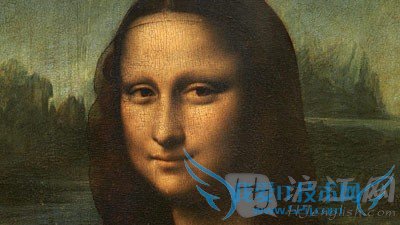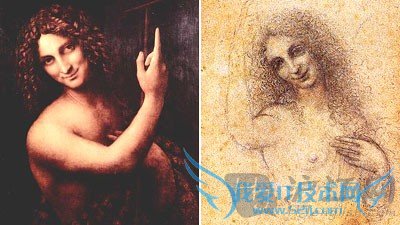��ӭ������52ijӢ��������������С��Ϊ�������Ӣ��֪ʶ�ǣ������о���������ɯԭ���Ǵ����������ѧͽ����������������ϸ�ķ�����
���о���������ɯԭ���Ǵ����������ѧͽ����

An expert has claimed to have unravelled the mystery behind the world-famous Mona Lisa painting - saying the model was a man and Leonardo da Vinci's lover.
һλר�������Լ��ҿ�������������������ɯ��Ц��֮������ܡ��������˵�ԭ�ͣ������Ǹ���ģ�����Ǵ��������ˡ�
Artist da Vinci has proved an endless talking point for conspiracy theorists looking for hidden meanings in his works.
�����Ҵ����������������㹻����գ����ú������������ı���ߴ����Ļ�����Ѱ����ν��ص����ܡ�
The Mona Lisa's real identity remains shrouded in mystery with a silk merchant's wife, Lisa Gheradini, being seen as the most likely model for the painting.
������ɯ����ʵ���ݣ���ǰ����˵��ijλ˿�����˵����ӣ���ȴʼ�������ɵ㡣
That was until Silvano Vincetti, chairman of the Italian national committee for cultural heritage, made his startling revelation.
ֱ��������Ļ��Ų�����ίԱ����ϯSilvano Vincetti���������������Ĵ��֡�

He said the identity of one of the world's most iconic paintings was a young man called Gian Giacomo Caprotti, also known as Salai.
��˵�������������ԭ����һλ�������ӣ�����Gian Giacomo Caprotti������Salai��
Salai and da Vinci worked together for 25 years and is believed to be the inspiration behind several of the Renaissance artist's works.
Salai�ʹ���湲��25�꣬�ݳ�Ϊ����治�����ո��˻�����������е���Դ��
Mr Vincetti said the artist and his effeminate apprentice had an "ambiguous" relationship.
Vincetti������˵�����������λ�����������ѧͽ֮�䣬���������Ĺ�ϵ��
The expert drew on several of da Vinci's works, including St John the Baptist and the Angel Incarnate, to highlight the similarities of the nose and mouth to that of the Mona Lisa.
��λר�һ��о���һϵ�д�������Ʒ��ָ����Щ�����е�������Ӻ���Ͷ���������ɯ������֮����

Mr Vincetti also backed up his claims with forensic evidence.
Vincetti��������һ������ս�������������з�ҽѧ֤�ݡ�
He said: "Close examination of a high-quality digital copy of the portrait had revealed an L for Leonardo and an S for Salai."
��˵����ͨ������������һ��ԭ��������ӵ������ֻ�����������ĸL��ʾ�����ɶࡤ����棬�Լ�S��ʾSalai����
The findings have been refuted by French art historians at the Louvre museum in Paris, where the Mona Lisa is one of the centre's star attractions.
�������ν������Զ�ڷ��������ķ���������ʷѧ������Կ���
Experts at the Louvre say they checked the painting two times in 2004 and 2009 saying: "No inscriptions, letters or numbers, were discovered during the tests.
������ר��˵����04���09�����ȼ��ԭ������ע�⡢��ĸ�����������Ķ�û�з��֡���

"The ageing of the painting on wood has caused a great number of cracks to appear in the paint, which have caused a number of shapes to appear that have often been subject to over-interpretation."
������ʱ������ƣ�ľ�ʻ����ϵ��Ͳʺܴ�̶����ܵ������ˣ����ֳ�һϵ��ͼ����״���������˹��������ȥڹ�ͻ�����������⡣��
Mr Vincetti, who has never had access to the painting, countered that the experts in Paris were "really blind".
���������λר��Vincetti������ʵ��δ����Ŀ���������������������ȴָ������ר�ҡ����۷�̥����һĨ�ڡ���
But he offered to come to the museum with his team to date test the paint of the letters to the rest of the canvas.
��ȴ����˵���������Ŷ�Զ������ȥ���ԭ�������ص�ѶϢ����С�ࣺ��ʵ������������Ŀ�İɣ���
His invitation has so far not been accepted, so for now the Mona Lisa will no doubt continue to smile enigmatically.
������Լ��δ�����ܣ�������ɯ�ͼ������������������ص�Ц�ɡ�
- �����б����������۽������ѱ�����˿���������������վͬ����۵��֤ʵ��������
-
